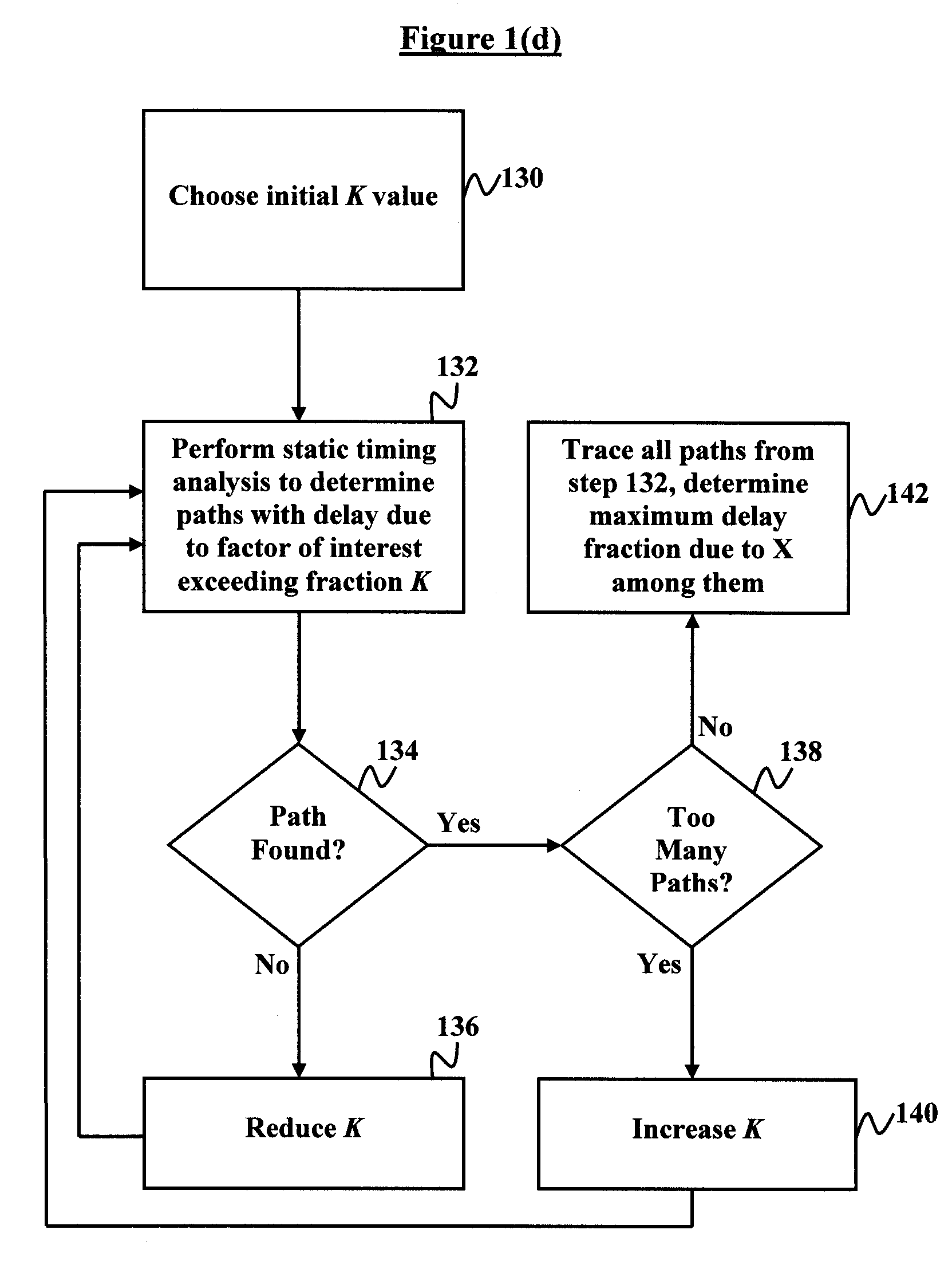Method of identifying paths with delays dominated by a particular factor
a delay and factor technology, applied in the field of static timing analysis, can solve the problems of affecting the design performance, and unable to examine all paths in real designs in practice, and achieve the effect of reducing the fraction of wire delay
- Summary
- Abstract
- Description
- Claims
- Application Information
AI Technical Summary
Benefits of technology
Problems solved by technology
Method used
Image
Examples
first embodiment
[0035]In the invention all paths in a network are identified whose fraction of delay due to some factor x is greater than some specified threshold K. Next all delays dx (i.e., delay due to factor x) are multiplied by any arbitrary positive factor Kx and all delays do (i.e., delay due to other factors o) are multiplied by Kx*K / (1−K). One choice is to set Kx=1 / K, so that all delays dx may be multiplied by 1 / K and all delays do may be multiplied by −1 / (1−K).
[0036]Thereafter, ATs at all path start points are set to zero. If all X-dominated paths are to be traced, then the required arrival times (RATs) at all path endpoints may be set to zero, allowing normal slack-based late mode path tracing to be used to determine the X-dominated paths. Whereas, if it is only desirable to determine whether at least one AT-dominated path exists to any given path endpoint, no RAT setting or propagation is required. A normal late mode node-oriented static timing analysis is then performed. Any path endpo...
third embodiment
[0040]In a third embodiment, it is determined which timing tests in which the portion of the delay of the late mode path to the test which is due to factor X is greater than R times the portion of the delay of the early mode path to the test which is due to factor X. In this case the start node arrival times are again set to zero, the delays dx in the late mode paths are multiplied by any positive factor Kx, and the delays do in the late mode paths are multiplied by 0 (i.e., they are omitted). The delays dx in the early mode paths are multiplied by Kx*R, and the delays do in the early mode paths are also multiplied by 0. A normal static timing analysis is then performed. Any test with a negative slack indicates that the portion of the delay of some late mode path to the test which is due to factor X is greater than R times the portion of the delay of some early mode path to the test which is due to factor X.
[0041]Once again normal path tracing (using the RATs computed due to the tes...
PUM
 Login to View More
Login to View More Abstract
Description
Claims
Application Information
 Login to View More
Login to View More - R&D
- Intellectual Property
- Life Sciences
- Materials
- Tech Scout
- Unparalleled Data Quality
- Higher Quality Content
- 60% Fewer Hallucinations
Browse by: Latest US Patents, China's latest patents, Technical Efficacy Thesaurus, Application Domain, Technology Topic, Popular Technical Reports.
© 2025 PatSnap. All rights reserved.Legal|Privacy policy|Modern Slavery Act Transparency Statement|Sitemap|About US| Contact US: help@patsnap.com



